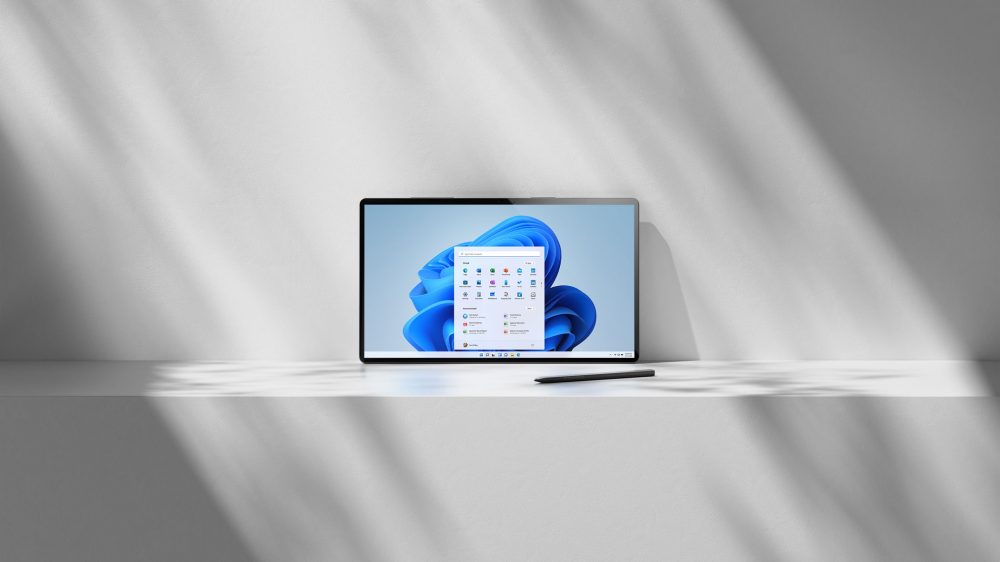Microsoft fixes Windows 11 upgrade bug
Users weren’t told why they couldn’t upgrade to Windows 11

Microsoft has released a tool to assist users that are struggling to upgrade from Windows 10 to Windows 11.
Microsoft unveiled Windows 11 last week, but early adopters were quick to complain that a bug prevented them from upgrading without an explanation. According to these users, PC Health Check would only display a message that stated, “this PC can’t run Windows 11,” with no further information on how to rectify the issue.
Microsoft has now updated the PC Health Check app so it should be able to spell out exactly why a Windows 10 device can’t update to Windows 11, according to DigitalTrends.
With the completed update, PC Health Check should alert users to installation problems, such as insufficient disk space, an unsupported processor, or the lack of a TPM 2.0 chip. Microsoft requires these elements to run Windows 11, a decision that’s been the subject of controversy.
The full list of Windows 11 requirements is available on the operating system’s hardware requirements page, but the basic requirements include 4GB of RAM, 64GB of storage; a compatible 64-bit processor (Intel 8th generation or newer, or AMD Ryzen 2000 series or newer); and a TPM 2.0 chip or a graphics card compatible with DirectX 12 or later with WDDM 2.0 driver.
If your system doesn’t meet these requirements, your PC must remain on Windows 10. Microsoft intends to support Windows 10 until October 14, 2025.
RELATED RESOURCE

Windows 11 ships later this year, and Microsoft promises a slew of features targeting hybrid workers and developers.
Get the ITPro daily newsletter
Sign up today and you will receive a free copy of our Future Focus 2025 report - the leading guidance on AI, cybersecurity and other IT challenges as per 700+ senior executives
The new operating system will feature support for Android apps purchased from Amazon's app store. The company also revamped the Microsoft Store, allowing developers to use third-party payment systems when charging for apps. This lets developers keep 100% of the revenue.
Windows 11 will also feature some user interface (UI) changes that will allow users to arrange their application windows into preconfigured layouts.
-
 Should AI PCs be part of your next hardware refresh?
Should AI PCs be part of your next hardware refresh?AI PCs are fast becoming a business staple and a surefire way to future-proof your business
By Bobby Hellard Published
-
 Westcon-Comstor and Vectra AI launch brace of new channel initiatives
Westcon-Comstor and Vectra AI launch brace of new channel initiativesNews Westcon-Comstor and Vectra AI have announced the launch of two new channel growth initiatives focused on the managed security service provider (MSSP) space and AWS Marketplace.
By Daniel Todd Published
-
 Tiny11 review: Windows 11 with only 2GB of RAM
Tiny11 review: Windows 11 with only 2GB of RAMReview A version of Windows 11 for older machines that don't meet the full requirements
By Nik Rawlinson Published
-
 Red Hat Enterprise Linux becomes foundational operating system for Cohesity Data Cloud
Red Hat Enterprise Linux becomes foundational operating system for Cohesity Data CloudNews New strategic partnership between Red Hat and Cohesity aims to drive innovation in the data security and management space
By Daniel Todd Published
-
 Ubuntu shifts to four-week update cycle
Ubuntu shifts to four-week update cycleNews Critical fixes will also come every two weeks, mitigating the issues involved with releasing prompt patches on the old three-week cadence
By Richard Speed Published
-
 AlmaLinux follows Oracle in ditching RHEL compatibility
AlmaLinux follows Oracle in ditching RHEL compatibilityNews Application binary compatibility is now the aim with 1:1 now dropped
By Richard Speed Published
-
 How big is the Windows 10 cliff-edge?
How big is the Windows 10 cliff-edge?ITPro Network With some comparing the upcoming Windows 10 end of life to Windows XP, we ask members of the ITPro Network for their insight
By Jane McCallion Published
-
 Everything you need to know about the latest Windows 11 updates - from bug fixes to brand-new features
Everything you need to know about the latest Windows 11 updates - from bug fixes to brand-new featuresNews Two new cumulative updates are on the way and will be installed automatically on Windows 10 and Windows 11 machines
By Rory Bathgate Published
-
 How to download a Windows 11 ISO file and perform a clean install
How to download a Windows 11 ISO file and perform a clean installTutorial Use a Windows 11 ISO to install the operating system afresh
By John Loeppky Published
-
 We could all benefit from better Windows and macOS accessibility features
We could all benefit from better Windows and macOS accessibility featuresOpinion Today’s accessibility features can help you work through a nasty injury, but there’s still plenty of room for improvement
By Barry Collins Published